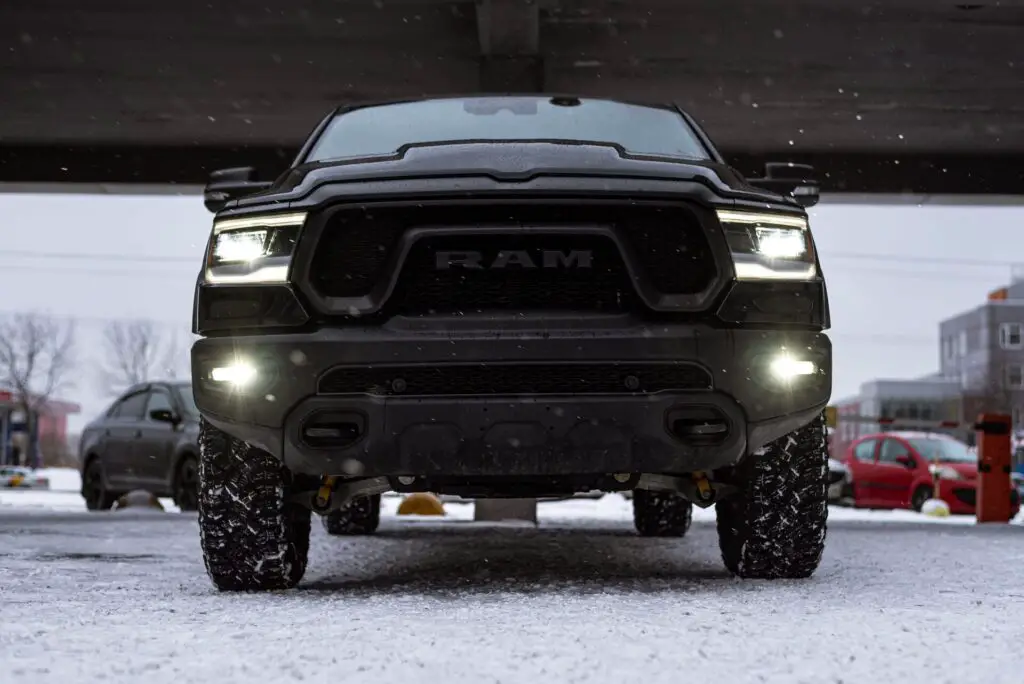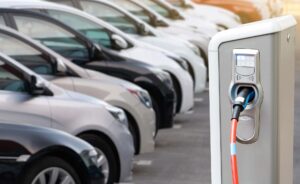Delving into the intricacies of driver behavior, our analysis unveils insights into accident-prone car brands. As we explore the data, it becomes evident that the key to reducing accident risks extends beyond the vehicle type to individual driving habits. So, let’s find out what car brand has the most accidents and what we should focus on to lower these numbers.
The Key Findings – What Car Brand Has the Most Accidents
So, what brand of car has the most accidents? In the recent road safety analysis using QuoteWizard by LendingTree insurance quote data, we delved into the driving behaviors of various car brands. The focus was on understanding which brands tend to have drivers associated with higher rates of accidents, DUIs, speeding, and citations. Was it the high-risk car models or some other types of cars? Let’s find out.
RAM’s Dominance in Driving Incidents
Among the 30 vehicle brands taken into account, RAM emerged with the highest occurrence of driving-related incidents. Nationally, RAM is among the car brands with the worst drivers. Their drivers recorded 32.90 incidents (DUIs, speeding, citations, and accidents) per 1,000 drivers between the middle of November 2022 and November 2023. Notably, the only additional manufacturers with incidence rates higher than 30.00 were Tesla (31.13) and Subaru (30.09).
Mercury’s Exemplary Driving Records
On the flip side, Mercury stood out for having the best drivers during the analyzed period. With a rate of 15.82 incidents per 1,000 drivers nationally, Mercury drivers demonstrated a considerably lower incident rate compared to RAM. Following closely were Saturn (16.84) and Pontiac (16.24).
RAM’s and Tesla’s Dominance in State-Level Driving Records
Zooming in on individual states, RAM exhibited the poorest driving records across 23 states, holding the highest frequency of incidents in almost half of the US states. Massachusetts took the lead, with RAM drivers experiencing 64.44 incidents per 1,000 drivers. In contrast, Tesla dominated as the worst across 11 states.
A Closer Look At the Cars With the Most Accidents – Tesla
When it comes to accidents specifically, Tesla drivers topped the list as the car with the most accidents. Tesla crash data shows an accident rate of 23.54 per 1,000 drivers between Nov. 14, 2022, and Nov. 14, 2023. If we look at the Tesla crash rate vs. other cars, RAM (22.76) and Subaru (20.90) were the only other vehicle brands that exceeded 20.00 accidents per 1,000 drivers. In contrast, Pontiac (8.41), Mercury (8.96), and Saturn (9.13) recorded vehicle accident rates below 10.00 per 1,000 drivers.
Unveiling High Incidence Rates of BMW
Notably, BMW drivers exhibited the highest DUI rate by a significant margin, with 3.13 DUIs per 1,000 drivers. This was nearly twice the rate of the next-highest brand, RAM (1.72). In contrast, Mitsubishi (0.89), Volvo (0.92), and Mercury and Kia drivers (both 0.93) had the lowest DUI rates. Only nine out of the 30 brands considered had DUI rates below 1.00 among their drivers.
A Deep Dive into Safety Concerns of Tesla
Let’s answer what car brand gets in the most accidents. According to the same analysis, Tesla drivers are reported to be the most accident-prone, with an alarming rate of 23.54 accidents per 1,000 drivers. This places Tesla ahead of other brands, with RAM (22.76) and Subaru (20.90) being the only ones to surpass 20 accidents per 1,000 drivers. Notably, the study didn’t delve into the reasons behind the incidents.
However, it coincides with Tesla’s recall of over 2 million vehicles due to a safety issue linked to its Autopilot software, particularly the Autosteer feature. The recall affects nearly all Tesla cars sold in the United States. Tesla, led by Elon Musk, is renowned for its pursuit of fully self-driving cars, although concerns have been raised. The National Highway Traffic Safety Administration highlighted issues with the Autosteer feature, prompting the recall to address concerns related to driver misuse.
Despite the recall, experts criticize Tesla for not addressing the fundamental issue of restricting Autopilot use in certain road conditions, questioning the efficacy of the warnings and alerts introduced. The recall, labeled the largest in Tesla’s 20-year history, faces scrutiny for potential missed opportunities in enhancing safety measures for the Autopilot system.
What Makes EVs Prone to Accidents
Electric Vehicles (EVs) pose distinctive challenges contributing to their increased accident risks. Firstly, EVs weigh substantially more than traditional vehicles, as demonstrated in tests by the Insurance Institute for Highway Safety (IIHS). While this weight provides enhanced passenger protection in crashes, it raises concerns for other road users. For instance, the GMC Hummer EV, exceeding 9,000 pounds, presents a significant risk due to its substantial weight compared to lighter vehicles.
Secondly, the silent operation of EVs can lead to potential hazards, especially for pedestrians, bikers, and drivers who rely on auditory cues. To address this, the European Union mandated acoustic vehicle alerting systems (AVAS) in 2019, generating artificial sounds to alert surrounding individuals.
Lastly, EVs carry an increased fire risk, primarily attributed to the high-voltage Lithium batteries they utilize. Although crash-induced fires in EVs and traditional cars share similar risks, the intensity of lithium fires necessitates substantial water usage for extinguishing, with the added challenge of battery reignition even after the initial blaze has been put out.

Disturbing Driving Trends and Safety Concerns With RAM
Continuing in the same analysis, the light is shed on RAM’s alarming track record. RAM emerged with the highest incidence of driving-related incidents, with 32.90 incidents per 1,000 drivers nationally, according to the study. This finding aligns with research by the IIHS, which unveiled the RAM 3500 as the vehicle with the highest rate of other-driver deaths in a crash. Specifically, the RAM 3500 Crew Cab Long Bed 4WD recorded 189 deaths in this category, raising concerns about its impact on road safety.
The IIHS study, conducted every three years, emphasizes the importance of considering specific models, and this year’s research covers model years 2018 through 2021. Notably, the association between large trucks like the RAM 3500 and a higher likelihood of causing harm in a crash is highlighted.
RAM 3500 and Vehicle Safety Disparities
Additionally, the IIHS study not only focused on other-driver deaths but also delved into the vehicles least likely to harm their occupants or others on the road. Interestingly, large trucks, including the RAM 3500, were found to be more prone to causing harm to others in a crash, as reflected in the list of vehicles with the largest number of other-driver deaths.
Meanwhile, the study pointed out that certain vehicles, like the BMW X3 and Lexus ES 350, stood out for their ability to protect their occupants in collisions. This highlights a notable contrast between vehicles that excel in passenger safety and those with concerning records of causing harm to others on the road.
The IIHS emphasizes the significance of newer models equipped with advanced safety features. It also attributes some discrepancies between “bad” and “good” lists to collision frequency involving newer models with older, less safe vehicles. Moreover, the study acknowledges an increase in speeding and reckless driving during the pandemic, indicating potential contributing factors to the observed patterns in vehicle safety records.

Subaru’s Noteworthy Position in Incident Rates
Subaru drivers, with an overall incident rate of 30.09 per 1,000 drivers, find themselves in the top tier of the analyzed brands. While not the highest, Subaru’s position among brands with incident rates above 30.00 raises questions about the driving habits associated with this popular carmaker.
Zooming in on specific driving aspects, Subaru drivers recorded an accident rate of 20.90 per 1,000 drivers during the analyzed period. Despite the brand’s reputation for safety and features, this accident rate places Subaru among the few brands surpassing the 20.00 benchmark. It’s essential to explore whether Subaru drivers’ behaviors contribute to car safety statistics or if other factors play a role.
Model Exploration of Subaru XV Crosstrek and Subaru WRX
Subaru, known for its versatile and adventure-friendly vehicles, introduces models like the Subaru XV Crosstrek and the sporty Subaru WRX. While these models offer modern safety features, the accident rates suggest a potential disparity between the brand’s safety features and the driving behaviors exhibited by some Subaru drivers.
In further scrutinizing Subaru’s performance, understanding the specific driving incidents contributing to the overall rate is crucial. This analysis provides an opportunity to explore whether Subaru’s marketing, vehicle design or other factors influence the driving habits of its users, shedding light on potential areas for improvement or targeted education campaigns.

A Comprehensive Guide to Safety Precautions
Road safety is of utmost importance, requiring a collective commitment to responsible practices by both drivers and pedestrians. Implementing effective safety precautions is essential for fostering a secure and responsible road environment. Here’s a comprehensive look at the crucial safety measures contributing to a safer road experience:
- Adopting defensive driving practices is fundamental to road safety. This includes staying vigilant, anticipating potential hazards, and maintaining a safe following distance. Defensive drivers prioritize caution and are prepared to react promptly to unforeseen circumstances.
- Respecting speed limits is not just a legal requirement but a pivotal safety measure. Speeding significantly increases the severity of accidents and reduces the driver’s reaction time. Adhering to designated speed limits contributes to overall road safety.
- Ensuring that vehicles undergo regular maintenance checks is instrumental in preventing mechanical failures that could lead to accidents. From brake systems to tire conditions, a well-maintained vehicle is more reliable and less prone to malfunctions.
- Modern vehicles come equipped with advanced safety technologies such as collision avoidance systems, lane departure warnings, and automatic emergency braking.
- One of the most critical safety precautions is a zero-tolerance policy for impaired driving. Being drunk or under the influence of drugs seriously decreases judgment and reaction times when operating a vehicle, which puts the driver, passengers, and other road users in grave danger.
- Safety on the road is a shared responsibility involving not only drivers but also pedestrians and cyclists. Pedestrians should use designated crossings, and cyclists must adhere to traffic rules.
Additionally, government agencies, non-profit organizations, and law enforcement play a vital role in educating the public about road safety. Awareness campaigns targeting specific issues such as distracted driving, seat belt usage, and the dangers of speeding help reinforce responsible behaviors on the road.

Prioritize Safety Over Vehicle Types
Our analysis underscores that driver behavior outweighs the type of vehicle in reducing the risk of car accidents. The 2023 list of accident-prone models features a diverse mix, from luxury to economy cars, and foreign to domestic makes. While high-performance models dominate, family-friendly cars also rank high. This aligns with brands on the speeding tickets list, including Audi, Hyundai, Kia, and Scion.
The paradox of cautious drivers choosing sports cars emphasizes that insurance rates may not align with driving habits. Insurance providers prioritize safety features, evident in every car on the crash-prone list receiving a “Good” IIHS evaluation. To lower auto insurance claims and accident risks, focus on safe driving habits, choose vehicles with intelligent safety features, and enjoy the ride responsibly.








